Biggest 401(k) Mistakes to Avoid
401(k) plans rank among the most popular investment vehicles for retirement savings; according to the Investment Company Institute, approximately 70 million Americans had one to their name as of December 2023.
While participating is essential, merely doing so isn’t enough—investors should also be aware of and avoid common mistakes that can potentially jeopardize their future goals. Let’s dive in and discuss some widespread blunders to help you avoid the same.
Not participating in a 401(k) when you have the chance
The most common mistake is failing to participate in a 401(k) plan when your employer offers one. Seems obvious, right? Maybe not, considering a recent study published by CNBC found that 40% of workers don’t contribute to one.
This is precisely why the SECURE Act 2.0 will require businesses to automatically enroll eligible employees in employer-sponsored plans at an initial contribution amount between 3% and 10% starting in 2025 (with this number increasing one percentage point annually until it reaches 10–15%).
Saving too little in your 401(k)
How much should you save? A little online research will lead you to various rules of thumb saying you should save anywhere from 10 to 20% of your gross income after you’ve paid off any high-interest non-mortgage debt.
You can also attempt to predict how much money you’ll need in retirement, which admittedly isn’t the most straightforward exercise—especially if your golden years are a ways away (it’s worth noting, however, that the average retiree household spends $57,818 annually).
Even if you settle on a number you’re comfortable with, you’ll need to decide how much to allocate to your 401(k); according to a recent Fidelity Investments study, the average annual 401(k) savings rate reflects 9.4% of worker earnings and a 4.8% employer match (totaling 14.2%).
The truth is that there is no right or wrong number, as your own unique financial situation and goals ultimately dictate how much you should save (and how to save it!). That said, we encourage you to sock away as much as possible while you can because retirement certainly isn’t cheap—and is only getting more expensive as the years go on!
At a minimum, you should contribute the entire amount eligible for employer matching—assuming your 401(k) plan offers this—as not doing so means losing out on free money and, thus, an easy way to boost your savings.
Not knowing the difference between 401(k) account types
Employers often offer two 401(k) account options for employees: a traditional 401(k) and a Roth 401(k). Knowing the differences between the two is important.
With a traditional 401(k), contributions are made with pre-tax money (typically automatically from your paycheck) and any balance gains grow tax-free—provided you don’t make early withdrawals (often before the age of 59½). 401(k) withdrawals are then taxed as ordinary income during retirement.
With a Roth 401(k) plan, you make after-tax contributions and can withdraw sums on a tax-free basis provided you’re at least 59½ and have owned the account for at least five years (known as the “five-year rule”).
Not rebalancing your 401(k)
Before you invest, it's crucial to understand your comfort level with risk as this will guide you (or your financial advisor) in deciding how to distribute your investments among stocks, bonds, and other options (aka “asset allocation”). After making your investment choices, be sure to regularly review your portfolio and make adjustments if needed.
Rebalancing, meanwhile, is simply the process of adjusting (buying and selling) your investments to restore portfolio weights to your desired asset allocation. Let's break it down…
Say you started with $50,000: $30,000 (60%) in stocks and $20,000 (40%) in bonds. If your stocks do well and your portfolio grows to $55,000, with 70% in stocks (worth $38,500) and 30% in bonds (worth $16,500), you'd need to sell some stocks and buy additional bonds to return to your original 60/40 mix.
The objective of rebalancing is twofold. First, you can optimize the value of your portfolio by selling investments when their value is high and buying other assets that have decreased in value but still have merit. Second, rebalancing helps keep you disciplined in that your investments won’t sway too far from your risk tolerance.
The best approach here is to review your 401(k) investments at least once a year and then determine, with the help of a financial advisor, whether rebalancing is necessary.
Taking out a 401(k) loan despite alternatives
If your 401(k) plan offers the option to take out a loan, the maximum amount you’re generally allowed to borrow is 50% of your vested account balance or $50,000, whichever is less. If your vested balance is $50,000, for example, you can borrow up to $25,000.
While a 401(k) loan may make sense in some cases, the corresponding risks generally outweigh the benefits: such as that you may end up contributing less (or nothing at all!) to your 401(k), as some employers don’t allow contributions when a loan is outstanding. You could also miss out on potential investment growth and be required to pay your loan back sooner than expected if you leave your job (voluntarily or otherwise).
As for better alternatives? These could include a home equity loan, personal loan, or zero-rate promotional credit card (assuming you can pay off the balance within the promotional period).
Leaving your job prior to your 401(k) vesting
As it usually doesn’t make sense to leave any money on the table, be sure to check your plan’s vesting rules before changing jobs whenever you can; if you leave before you’re vested, you won’t be able to hold on to employer contributions—which is essentially free money.
Over-investing in company stock within your 401(k)
Many employers give employees the option to invest in company stock within their 401(k) plans. While these opportunities are sometimes appealing, you’ll need to avoid overexposing yourself to excessive risk should you decide to engage in this practice—meaning you should generally not have more than 10 to 15% of your total retirement portfolio in one stock, which could make your assets more volatile.
Ignoring old 401(k) plans
Have a 401(k) with a previous employer? You may want to reconsider keeping it there. One potential option is to roll the funds over into your current employer’s plan (if allowed), especially if you're satisfied with available investment options, costs, and features. Plus, the decision to consolidate means one less account to manage!
You can also consider rolling over your funds into an IRA, in turn enjoying more investment choices than 401(k) plans typically offer. Plus, if you plan on changing jobs at least a few times over the remainder of your career, an IRA can serve as a single destination for the entire breadth of your retirement savings plans.
Not taking advantage of catch-up contributions
If you’re age 50 or older, the IRS allows you to make contributions above standard limits to your 401(k) and IRA (known as “catch-up contributions”).
For 2025, these limits are an additional $7,500 per year for your 401(k), allowing you to save a total of $31,000. And if you’re between 60 and 63, you can save an extra $11,250 a year (or a total of $34,750) in your 401(k).
If this makes sense for your overall plan, you should take advantage of these benefits—because even if you save an extra $3,000 annually ($250 a month) for 15 years and average a 4% return, for example, you’d accumulate more than $61,000 in additional retirement savings.
In sum: avoiding 401(k) mistakes
Though you’re likely off to a good start if you’re already participating in your employer’s 401(k) plan, you can set yourself up to do even better if you avoid the common 401(k) mistakes discussed in this article. Be sure to reevaluate your approach and make any necessary changes, accordingly!
Need assistance with your 401(k) or other retirement accounts? Schedule a FREE discovery call with one of our CFP® professionals.
———
Vision Retirement is an independent registered advisor (RIA) firm headquartered in Ridgewood, New Jersey. Launched in 2006 to better help people prepare for retirement and feel more confident in their decision-making, our firm’s mission is to provide clients with clarity and guidance so they can enjoy a comfortable and stress-free retirement. To schedule a no-obligation consultation with one of our financial advisors, please click here.
Disclosures:
This document is a summary only and is not intended to provide specific advice or recommendations for any individual or business.






